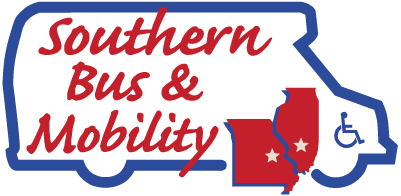How to Make a Van Wheelchair Accessible
Having a reliable, safe way for wheelchair users to travel is essential for independence and mobility. Whether you need a van for personal use or professional transport, converting a standard van into a wheelchair-accessible vehicle can make a big difference. Before making this decision, there are quite a few key steps, modifications, and considerations for making your minivan wheelchair accessible.
Understanding Wheelchair Accessible Van Conversions
What is a Wheelchair Accessible Van Conversion?
A wheelchair-accessible van conversion is the process of modifying a vehicle to accommodate wheelchair users, ensuring both safety and comfort. These conversions address challenges such as restricted mobility, vehicle entry, and securement during transit. Modifications often include:
- Ramp or Lift Installation: A ramp or lift allows easy entry and exit for wheelchair users. Ramps can be manual or automatic, while lifts are motorized platforms that provide additional support for heavier wheelchairs.
- Interior Adjustments: Interior spaces are reconfigured to create enough room for wheelchair movement, often requiring floor lowering, roof-raising, or seat removal.
- Driving Modifications: For wheelchair users who drive, adaptive equipment such as hand controls, joystick steering, or pedal adjustments can provide greater independence.
Converting a van to meet your needs and comply with safety and legal standards requires expertise and professional guidance. Wheelchair-accessible vehicles that are used to transport those with disabilities need to be ADA-compliant. Based on the Americans with Disabilities Act from 1990, these laws for wheelchair travel vehicles are implemented to provide necessary protections and safe accommodations. In addition to desired modifications, some of the wheelchair-accessible requirements for ADA compliance include:
- Ensuring the vehicle offers more space
- Converted for ramp access, either via side or rear-entry
- Gear shift locks to prevent the vehicle from being easily shifted into gear by mistake
Benefits of Converting a Minivan
Minivans are a popular choice for wheelchair-accessible conversions due to their unique combination of space, versatility, and ease of handling. Some of their key advantages include:
- Ample Space for Modifications: Minivans offer sufficient interior space to accommodate ramps, lifts, and wheelchair securement systems without compromising passenger comfort.
- Ease of Handling: Unlike larger vehicles, minivans are easier to drive and park, even with modifications. This is particularly important for families or caregivers who frequently navigate urban or suburban areas.
Choosing to convert a minivan ensures you benefit from a practical, comfortable solution for accessible transportation.
Types of Handicap Vehicle Modifications
Ramp vs. Lift Conversions
Choosing between a ramp and a lift depends on the user’s specific needs.
- Ramp Conversions:
- Manual Ramps: Cost-effective and lightweight, these ramps are a practical choice for users who prefer simplicity.
- Power Ramps: These ramps deploy automatically, offering convenience and ease of use with just the press of a button.
- Entry Options: Side-entry ramps allow access from passenger doors, while rear-entry ramps are ideal for narrow parking spaces.
- Lift Conversions: Lifts are motorized platforms designed to raise and lower wheelchairs into the van. These are ideal for users with heavy power wheelchairs or those who need additional support. While more expensive than ramps, lifts provide unmatched ease of use and are often installed in larger vans or buses.
Interior Adjustments for Accessibility
Transforming a van’s interior is critical to making it wheelchair accessible and comfortable for other passengers. These adjustments prioritize both space and functionality:
- Reconfigured Seating: Seats may be removed or repositioned to allow for wheelchair access and securement. Some layouts maintain additional seating for passengers, offering flexibility for families.
- Lowered Floors and Raised Roofs: For taller wheelchairs or users who remain seated during transit, adjustments to the floor or roof height ensure comfort and safety.
- Tie-Down Systems: Wheelchair securement systems, such as four-point straps or docking stations, keep the wheelchair stable during transit, reducing the risk of movement or injury.
Driving Modifications
For wheelchair users who wish to drive, modern technology has made it possible to adapt nearly any vehicle. Key modifications include:
- Hand Controls: These controls allow drivers to operate the accelerator and brake using their hands instead of their feet. Options range from simple push-pull systems to advanced electronic controls.
- Pedal and Steering Adjustments: Adjustable pedals or steering columns help customize the driving experience for individual needs.
- Joystick Controls: For drivers with limited upper-body mobility, joystick systems provide a highly adaptable solution for steering, braking, and acceleration.
Steps to Make Your Minivan Wheelchair Accessible
Converting a standard van into a handicap-accessible vehicle is not a small project. There are several things to consider and steps to take from the beginning to get what you want. Many vehicle manufacturers offer a variety of options for wheelchair travel vehicles as well as available wheelchair-accessible van designs. Still, it’s not as simple as choosing a package from a catalog and placing your order.
Consulting With an Expert
Converting a van into a wheelchair-accessible vehicle is a significant investment, which makes working with a knowledgeable professional essential. A reliable conversion company will guide you through:
- Assessing your needs, including the type of wheelchair and the frequency of use.
- Identifying the best options for ramps, lifts, and interior adjustments.
- Ensuring the vehicle meets ADA compliance and safety standards.
Planning the Customization
Planning is a crucial step in the conversion process. To ensure your van meets your needs:
- Evaluate Your Requirements: Consider how the wheelchair user enters, exits, and travels within the van. Will they drive or need assistance?
- Choose Features Wisely: Decide between ramps or lifts, manual vs. power options, and the interior layout that best suits your needs.
- Set a Budget: Wheelchair van conversions can be costly, so it’s important to plan ahead and explore financing options.
Who Will Perform the Conversion?
Standard dealerships can offer wheelchair conversions but may not be as knowledgeable about the capabilities. Even knowing what you need mobility-wise, you may feel overwhelmed when determining what features and capabilities you need to install. These dealerships may be able to answer some questions based on information available in manufacturers’ guides but won’t be able to get too in-depth.
Shopping with a dealership with the proper knowledge and training about mobility needs, like what you’ll find at Southern Bus & Mobility, will help you make a more informed decision about the best conversion features.
Choosing the Right Van for Conversion
Before considering a van conversion, you must ensure the van you purchase offers the possibility of conversion. Not every vehicle or van offers this capability, so talking with an experienced dealership can help verify this if you find one you’re interested in. The conversion process can be quite involved as it requires removing some interior components to create more space, including lowering the floor or raising the roof before installing a ramp or lift.
Popular vehicles such as the Toyota Sienna, Honda Odyssey, Dodge Grand Caravan, and Chrysler Pacifica are designed with conversion capability in mind, offering buyers:
- Durable structures that can withstand modifications.
- Spacious interiors that allow for comfortable wheelchair accommodation.
- Compatibility with a range of ramps, lifts, and driving aids.
Plus, as long as the conversion is performed through a conversion manufacturer, your vehicle’s manufacturer warranty will remain valid.
Costs and Financing for Accessible Van Conversions
Typical Costs for Wheelchair Accessible Van Conversions
Converting an existing vehicle to be wheelchair-accessible can be quite costly. In addition to the van purchase price, you will need to spend an additional $10,000 to $20,000 for a basic ramp or lift conversion. If you require specialized equipment or advanced features like power lifts, custom interiors, or driving modifications, your additional cost could be upwards of $60,000 to $100,000.
Because of this added cost, a previously affordable van can quickly become out of budget. Working with a dealership experienced in mobility vehicles will ensure you don’t overspend on unnecessary features and help you determine which capabilities fit your mobility needs and budget.
Financing Options
Fortunately, there are several financing options to help offset the cost of wheelchair van conversions for many consumers:
- Insurance Coverage: Some policies cover partial costs for medically necessary conditions.
- Grants and Assistance Programs: Organizations like the VA or government grants may offer financial aid.
- Loans: Many dealerships provide financing options tailored to accessible vehicle purchases.
Discussing these options with your dealership or conversion expert ensures you secure the funding you need to complete your project.
Ready to Get Your Van Wheelchair Accessible?
Investing in a wheelchair-accessible van is a life-changing decision, offering greater freedom and mobility. Whether you wish to convert a van yourself or purchase one that already has the features you want installed, Southern Bus & Mobility can help. As an NMEDA QAP Certified dealer, we provide expert guidance, a wide range of conversion options, and financing solutions to fit your needs.
For more details, contact Southern Bus & Mobility or stop by one of our locations to get started on your journey to accessibility.

